Taos Mesa Day Dream #2
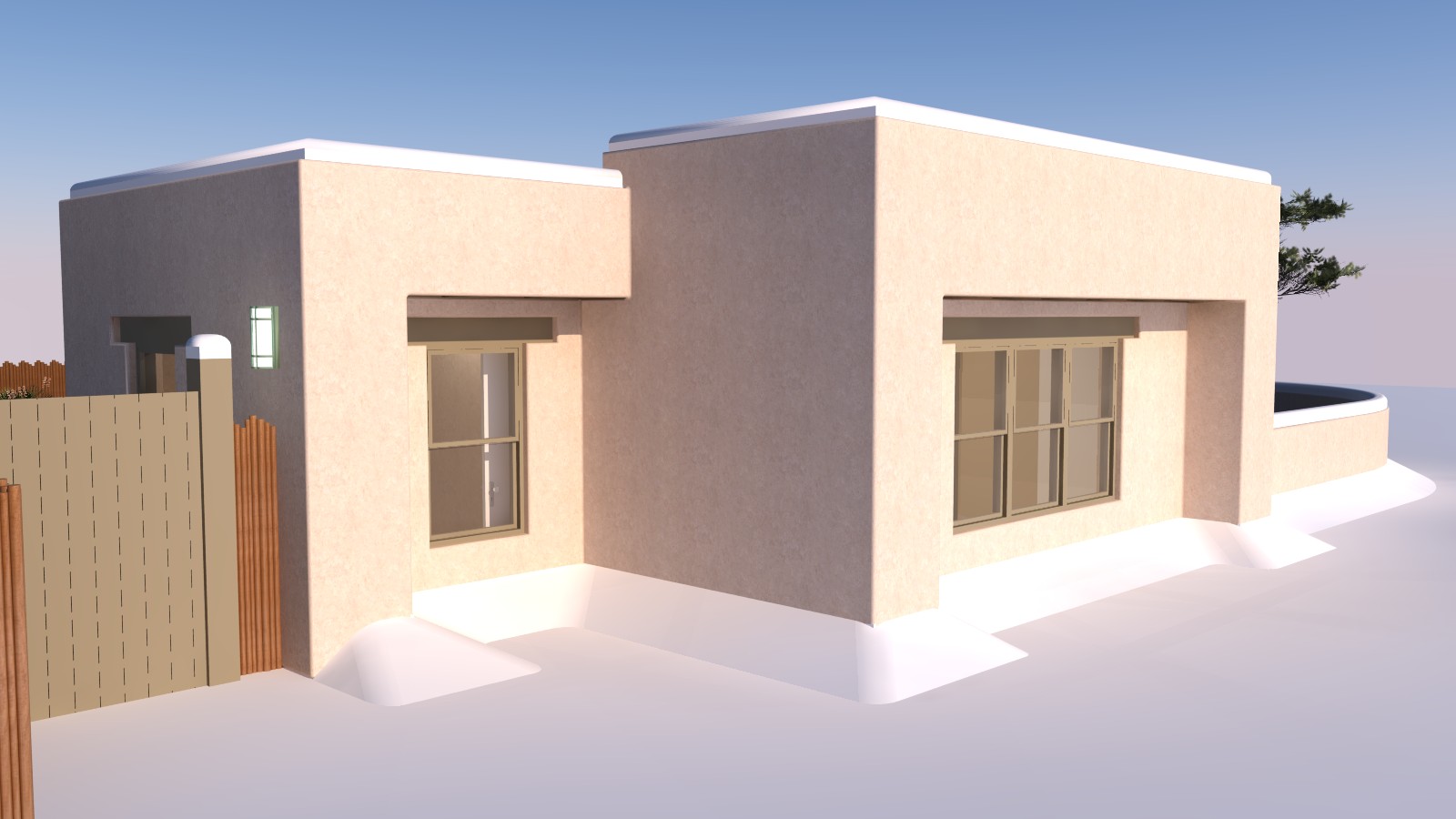
The first installment of this brief side exploration into small adobe homes was about twice as big as this 500 square foot design. The usable living space is actually 393 square feet when you take the wall thickness into account.
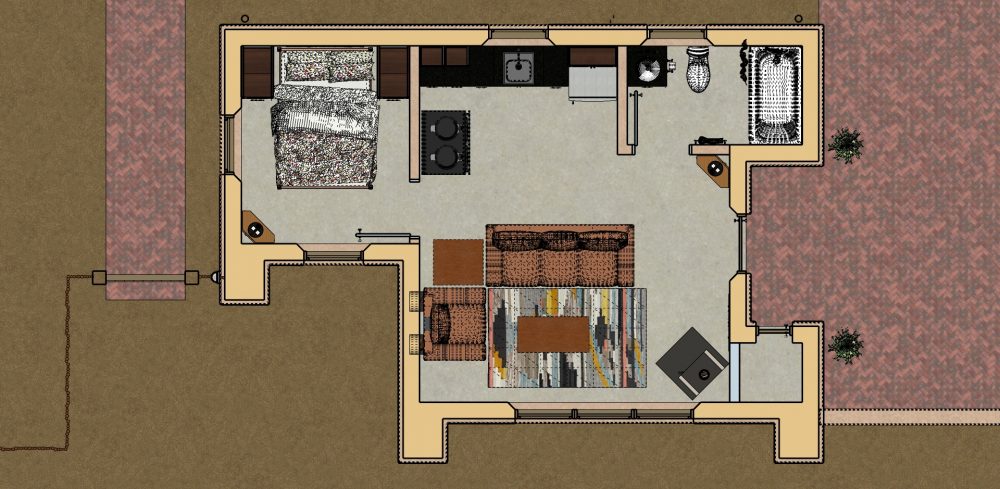
The house has one main room with a kitchen and living space. On the west side of the house is a tiny bedroom. Closet space in the bedroom would be provided by tall armoires that flank the sides of the bed. Beside the kitchen is a bathroom with a normal toilet and tub. Off the front porch is a small utility room for a water heater. I imagine the solar system and batteries being located in the garage/studio/workshop.
The main entry patio faces south east and would get a lot of sun. This would help to melt the snow out there in the winter, but may be too hot for relaxing outside in the summer. Another patio on the north side of the house would be cooler in the summer.
The garage/studio/workshop has a large window on the north side of the building and a small window on the west. North light is better for most art studios because it helps make colors look true.
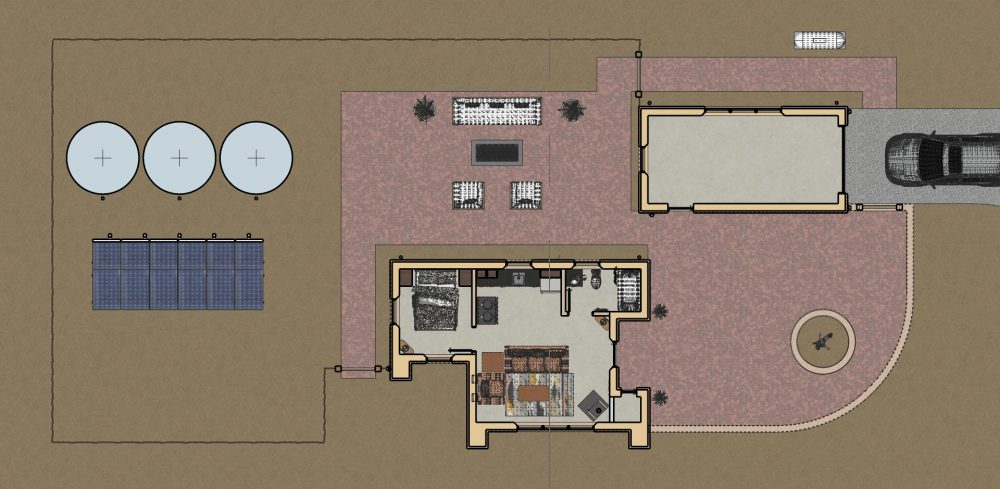
I’m using the Taos Mesa area for this fictitious design exercise. There is inexpensive land to the west side of the Rio Grande Gorge Bridge where many people have built frugal homes in this high desert – including Earthships.
There are a few challenges to building in this area, for example most people haul their water in from a shared community well and collect as much rainwater as they can. It rains about 13-inches a year on average.
The other big challenge is waste water treatment. I’ve read that Taos County doesn’t typically approve conventional septic systems on lots smaller than a 3/4 acre. I don’t know if there are approved alternative systems (like self-contained composting systems) that the county allows on smaller quarter acre lots.
In any case, a house like this should ideally be plumbed with a greywater system to reuse the sink and shower drains and run the kitchen sink and toilet to the blackwater septic system. Earthships have a clever feature where the greywater is filtered and used to flush toilets – so adapting that to work in a house like this seems like a good idea too.
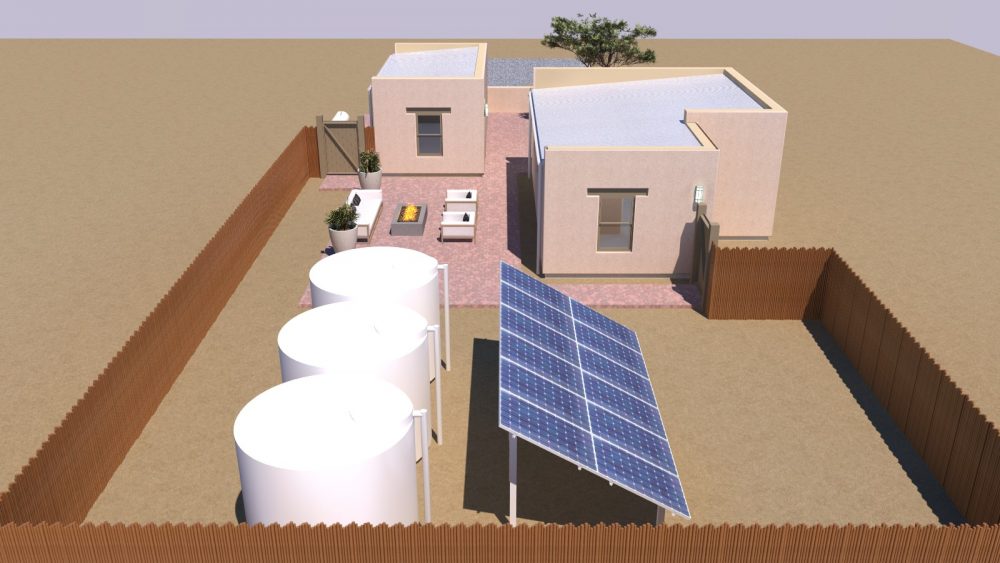
I’m showing 9000 gallons of water storage, which is a bit more water than could be collected on the 800 square feet of roof. The solar system would be sized to accommodate the occupant’s needs. Next to the garage I show a propane tank for radiant floor heating and hot water. A wood stove could provide auxiliary heat.
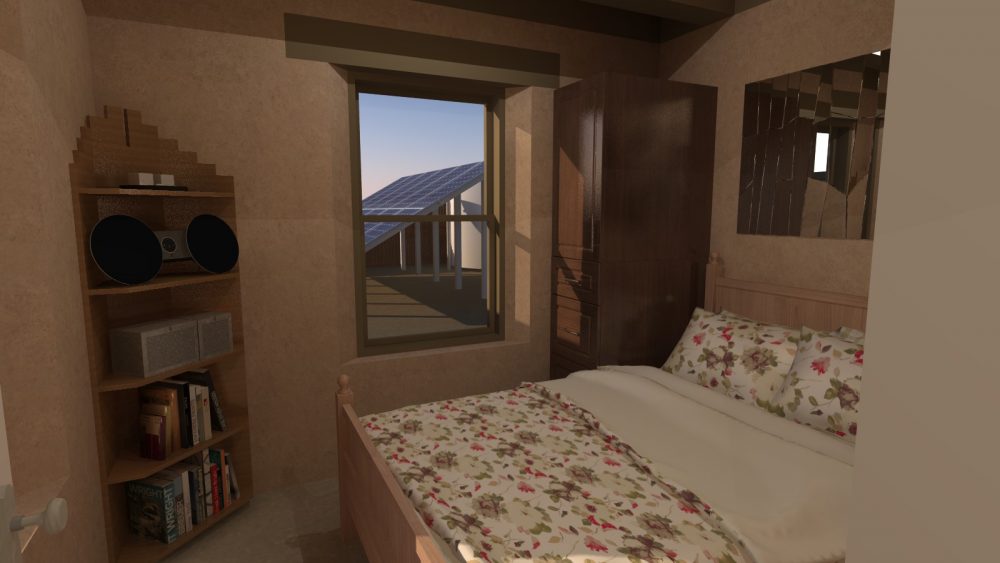
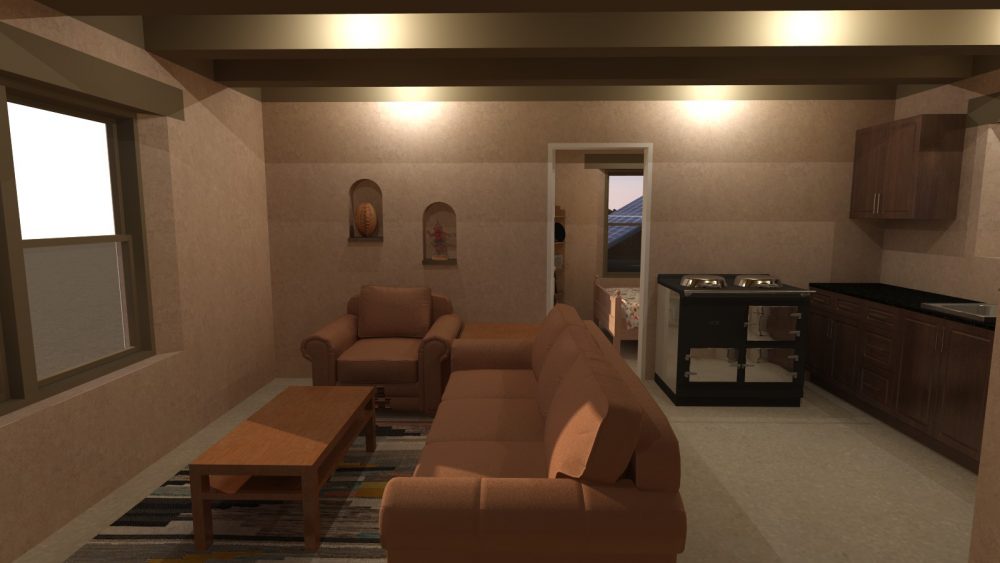
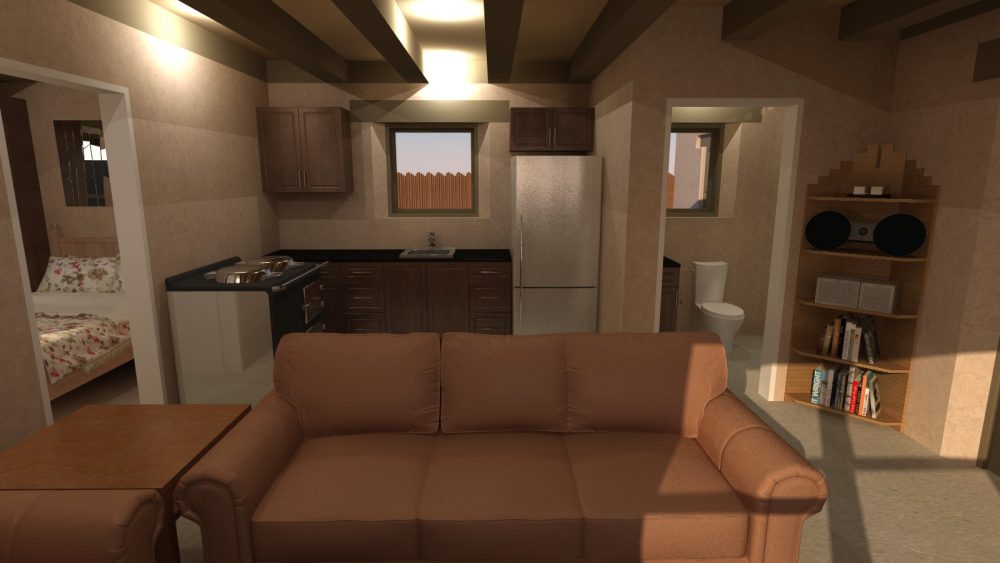
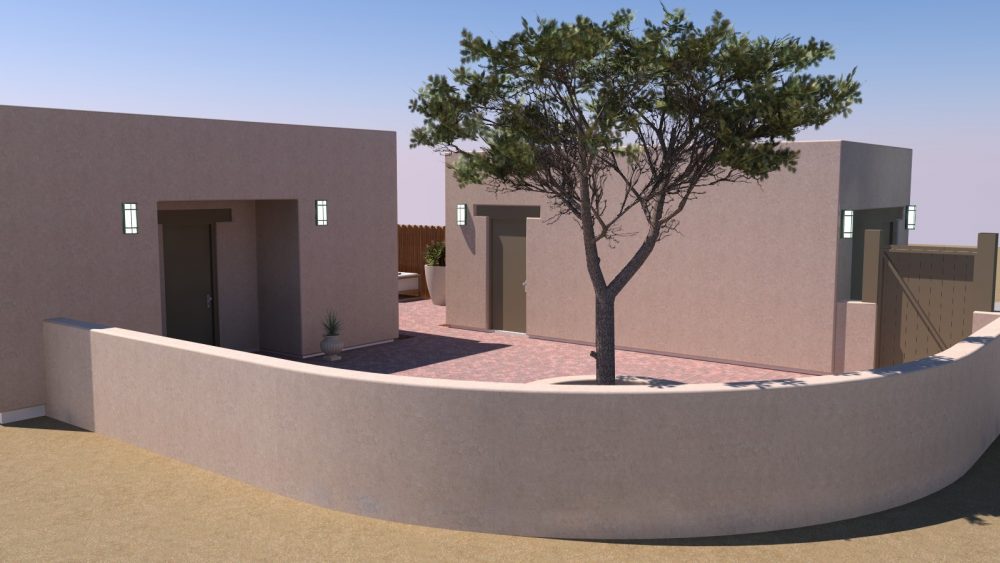
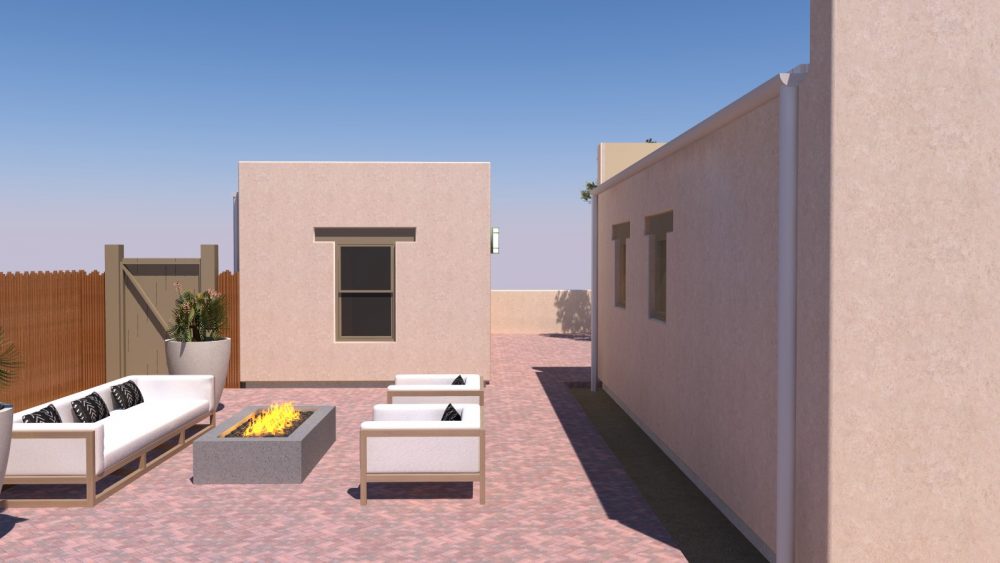
Solar Exposure
I chose to inset the windows on the south side 3-feet to shade them in the summer and allow the sun to enter in the winter. The two images below show how this works.
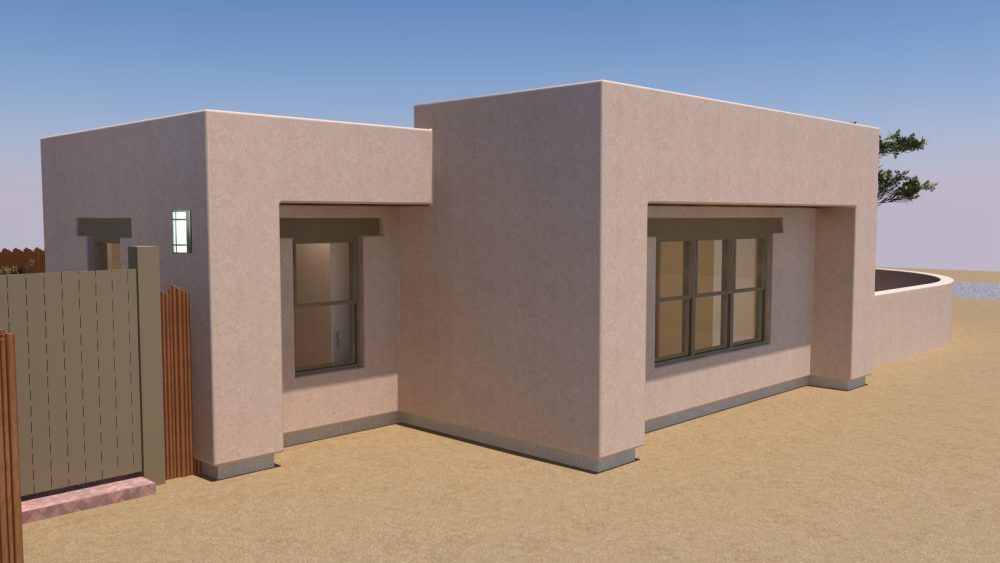
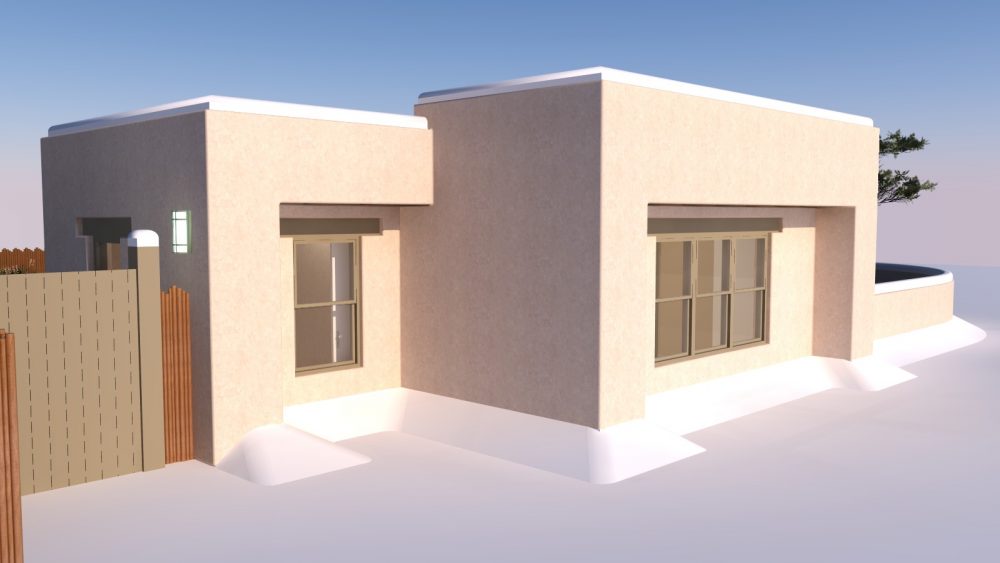
Why Adobe?
While adobe is common in the Southwest, it could be used in many other places too. Here are some of the reasons people choose this building material.
Thermal Mass – The other main reason people build with adobes is the thermal mass they provide. They are like energy batteries, soaking in the sun during the day while the interior of the home stays temperate and releasing the warmth at night.
Readily Available Material – Adobe is dirt, ideally with 30% clay and 70% sand. You might already have this building material under your feet. To test it, scoop some up, put it in a glass jar, mix it with water throughly and wait for it to settle. The organics, clay and sand will separate forming layers with the sand on the bottom and clay above that. Once everything has settled and the water has cleared, measure the thicknesses of the layers to determine if your dirt has the right stuff.
Easy to Make & Use – Adobe blocks start as mud that’s placed into wood forms and allowed to dry in the sun. The clay and sand content is what holds the block together and makes it strong. Straw is often added to help hold things together better and asphalt emission is optionally added to make the blocks more weather resistant. Mud mortar is used to lay up the blocks. The blocks cut easily by scoring and splitting apart.
Cost – To make your own blocks is very labor intensive, but virtually free if your dirt passed the test. Buying adobe blocks (standard size is 10″x14″x4″) is still fairly inexpensive at about $1.84 a block (prices fluctuate regionally and seasonally). But cost is only one reason you’d want to build with dirt.
Quiet Interiors – The inside of an adobe home is incredibly quiet and peaceful. The earthen walls can soak up sounds and keep separate rooms silent and private.
Natural Material – With the exception of the asphalt emulsion – which is common in commercially made blocks – adobe blocks are all-natural and contain no chemicals. If you have chemical sensitivities this is a great material to build with especially if you get unstabilized blocks without asphalt in it.
Long Lasting – As you might imagine, water and adobe blocks don’t mix since they disintegrate when exposed to water for long durations; but there are many adobe buildings that are hundreds of years old. Taos Pueblo is made of adobe blocks and it’s the longest continuously inhabited community in North America – people have live there for about 1000 years. So if adobe is maintained and protected from the weather and flooding, it can last for many lifetimes.
Wrapping Up
I think this house would make a good small home for an individual or couple. It would also make a good small vacation rental or guest house. It’s lacking a place for laundry machines – although those could be located in the garage.
I’ll get back to tiny house on wheels soon, but would love any feedback you want to share.

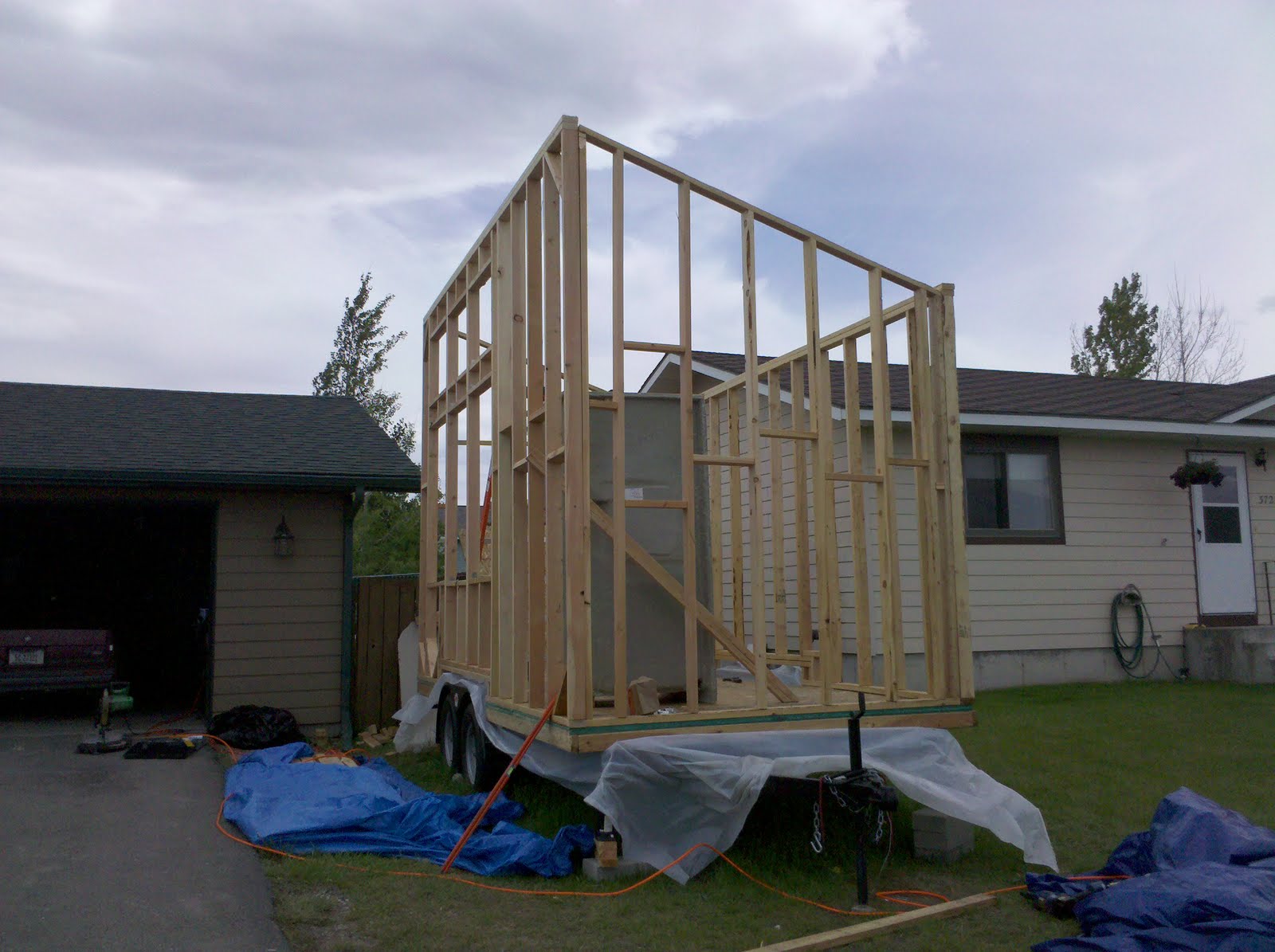

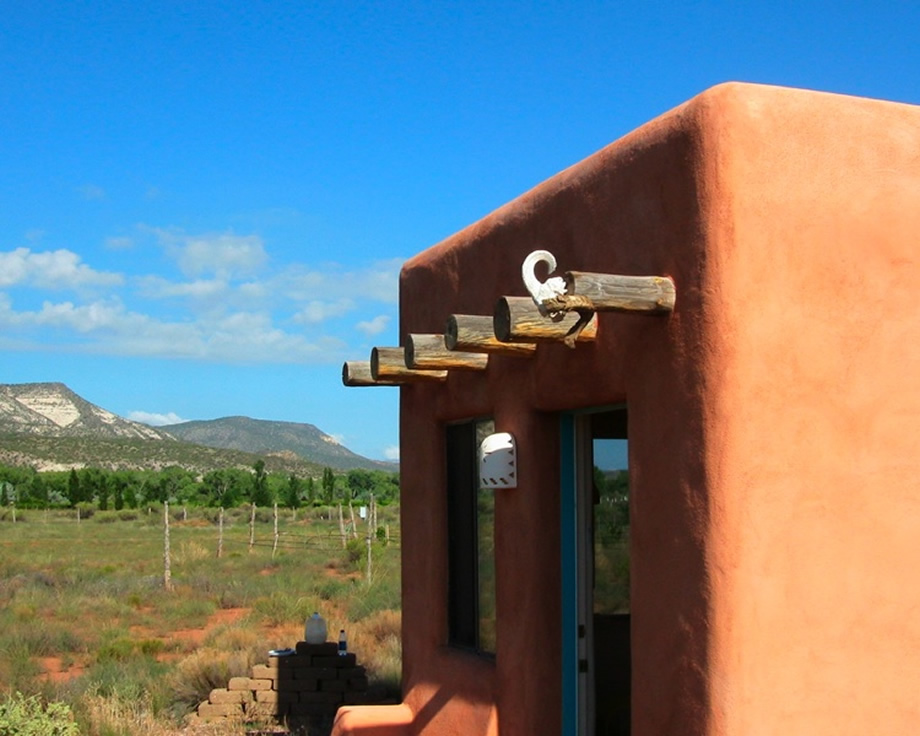
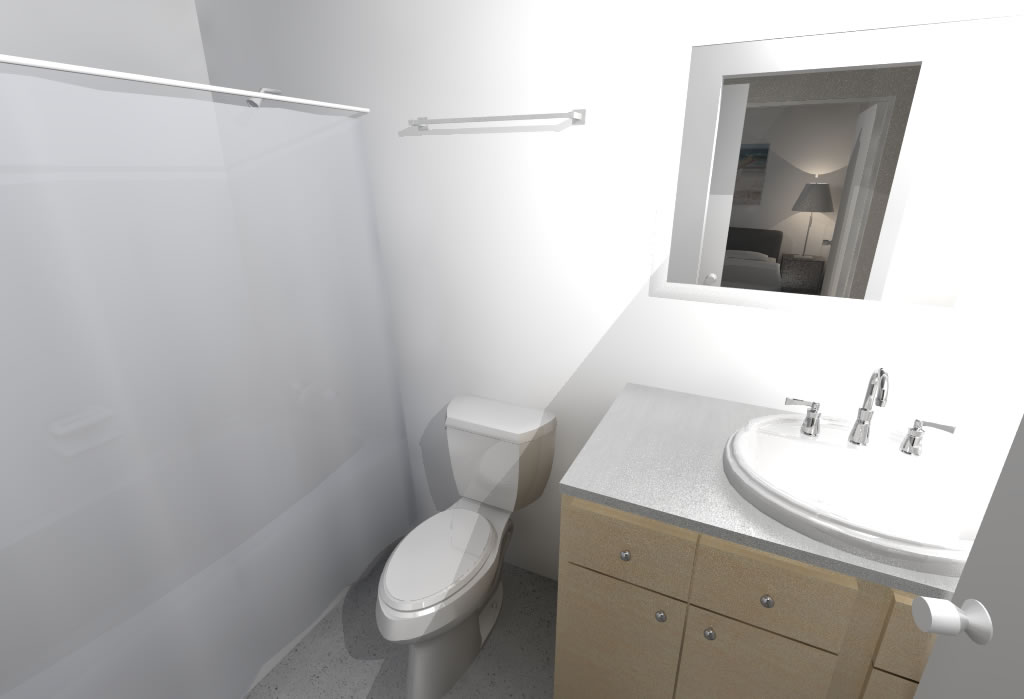

Thanks so much for this tiny adobe home ideas, especially this one!
If you put in a shower stall instead of the tub in the bathroom, would you be able to place an all-in-one washer/dryer combo or a stacked washer/dryer in the left over space?
Is that a woodstove in the corner of the living room?
Yes excellent idea. Yes that’s a wood stove.
This design has me all excited, lol. Putting a Murphy bed inbetween the wardrobes (using the flat surfaces above all three for books/storage or build the wardrobes and Murphy bed as one unit, thereby giving a single flat surface/shelf over the top), and switching out the corner bookcase for a corner desk would allow that room be used as a full-on office, and allow floor space for yoga without having to shift the couch or blocking the front door.
Some small homes are cute but this floor plan is a dreadful. A bath room should be closer to the bed room. The kitchen is painful to look at because it’s poorly thought out and actually should be bumped out about two or three feet more. Most people need a second bedroom for guests/as an office/or a hobby room etc. A one car garage? In this day and age? There’s small and there’s cramped. This design is cramped.
Excellent plan, love the fenced yard with room for raised bed veg garden, fruit trees. However, I would install a shower leaving room for a stacking w/d. Guests can sleep in the couch, the garage should be deep enough for tools, etc. I would live there!!
Great plan! As a minimalist, this plan flows well and works great. A one car garage works since we only have one vehicle but a carport could be added if necessary. When I lived in NM, I didn’t have much need for a dryer. I just hung things on drying rack and they were dry within about 30 min. at most. You could probably put the washer in the bathroom, that would keep the plumbing altogether. I wouldn’t use a full sized stove in the kitchen myself. I’d probably just use a small two-burner propane and a microwave and my solar oven. Thanks for the ideas!